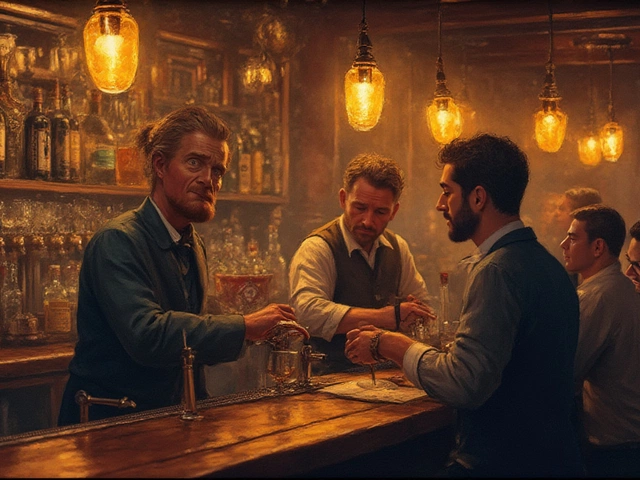Vodka Brands History: How Today’s Favorites Got Their Names
If you’ve ever wondered why some vodkas sound like luxury hotels while others feel like a local grocery aisle, the answer lies in a tangled history of politics, tech, and marketing. Below is a quick, down‑to‑earth guide that shows how a few well‑known brands went from small stills to worldwide shelves.
Early Russian and Polish Roots
Vodka’s story starts in the 14th‑century Polish‑Lithuanian Commonwealth and the Russian Tsardom. Early producers called it "zhar" or "wódka," meaning "little water." The first recorded recipe comes from 1392 in the German city of Magdeburg, but the spirit truly took off when Russian nobles demanded a clear, neutral drink to mask the harsh taste of cheap grain. By the 1700s, state‑run distilleries in Moscow and St. Petersburg were churning out vodka for the aristocracy and the army.
Brand Birth in the 19th Century
The 1800s saw the rise of the first recognizable labels. In 1860, the Smirnoff family launched a charcoal‑filtered vodka that claimed a smoother finish – a claim that helped it survive the Russian Revolution. Around the same time, Polish brand Żubrówka introduced a bison‑grass infusion that gave its vodka a distinct herbal note. These early brands used family names and regional ties to build trust, a tactic still common today.
Prohibition, War, and Global Expansion
World War I and the Russian Revolution shattered the domestic market, forcing many distillers to flee. Smirnoff’s founder, Pyotr Smirnov, moved to Paris and later to the United States, where he introduced the brand to an American audience hungry for a clean‑tasting spirit after Prohibition ended in 1933. Meanwhile, Soviet‑era brands like Stolichnaya (Stolichnaya) were created to showcase state‑controlled quality, and they quickly became export staples during the Cold War.
Modern Marketing Moves
The 1990s and 2000s turned vodka into a lifestyle product. Brands like Absolut dropped the classic Russian imagery and went for bold art‑filled bottles, while Grey Goose positioned itself as a premium French vodka, even though the water comes from the Cognac region. Cheap‑vs‑expensive debates (see our post on "Cheap vs Expensive Vodka") sparked consumer interest, prompting companies to highlight filtration methods, corn vs wheat bases, and even calorie counts. Health‑focused lines such as Belvedere's low‑calorie variants answered the growing demand for “clean” alcohol.
What Makes a Vodka Brand Stand Out Today?
Three things matter most: purity, story, and versatility. Modern customers want to see a clear filtration process (charcoal, quartz, even silver), a compelling backstory (family heritage, regional water source), and a spirit that works both straight and in cocktails. That’s why our "Smoothest Vodka for Sipping" guide ranks brands that combine a clean mouthfeel with a memorable narrative.
Whether you’re reaching for a classic Russian bottle, a sleek Scandinavian label, or a new low‑calorie American craft vodka, understanding the brand’s history gives you a better reason to enjoy every sip. Next time you pick up a bottle, ask yourself: what story is this bottle telling, and how did it survive the wars, the bans, and the trends to sit on my shelf today?
Did Trump Vodka really exist? Uncover the wild story behind Donald Trump’s vodka brand, why it disappeared, and whether you can still find a bottle today.
View Details

